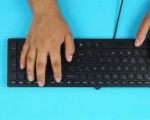How to Perform a Clean Install of Windows via USB
- 1. Preparing for the Clean Install
- 2. Creating a Windows Bootable USB
- 3. Installing Windows via USB
- 4. Troubleshooting During Installation
- 5. Finishing the Installation and Setup
1. Preparing for the Clean Install
Before starting a clean install of Windows via USB, it’s important to ensure that you’re fully prepared. A clean install will wipe out all your existing data, so make sure to back up your important files first. You'll need a USB drive with at least 8GB of space and access to a Windows computer to create a bootable installation media.
It's also recommended to check the system requirements for the version of Windows you're installing to ensure compatibility with your hardware. This step will save you time and prevent installation issues later on.
2. Creating a Windows Bootable USB
To perform a clean install of Windows, you'll need to create a bootable USB drive. This can be done easily with the Media Creation Tool from Microsoft. Here’s how:

Car Toys
2859 35th Ave, Greeley, CO 80634, USA
2.1. Download the Media Creation Tool
Visit the official Microsoft website and download the Media Creation Tool for Windows. The tool will guide you through the process of creating the bootable USB drive. Make sure you choose the correct version of Windows (e.g., Windows 10 or Windows 11) that matches your system’s needs.
2.2. Prepare the USB Drive
Insert the USB drive into the computer and select it as the target destination in the Media Creation Tool. The tool will format the USB drive and download the necessary installation files from Microsoft. This process can take some time, so be patient.
2.3. Verify the Bootable USB
Once the tool completes the process, it’s a good idea to verify that your USB drive is properly formatted and bootable. You can do this by restarting your computer and checking if the USB drive is recognized during boot-up.
3. Installing Windows via USB
With your bootable USB drive ready, it’s time to install Windows. Here are the steps to follow:
3.1. Boot from the USB Drive
Restart your computer and access the boot menu by pressing a specific key (usually F12, Esc, or Del) during startup. Select the USB drive as the boot device. Your computer will then boot into the Windows installation process.
3.2. Start the Installation
Once the installation screen appears, follow the on-screen instructions. Select your language, time zone, and keyboard layout. When prompted, choose "Install Now" to begin the installation process.
3.3. Select the Partition
During the installation process, you’ll be asked where to install Windows. If you're performing a clean install, it’s important to select the partition that currently contains your old operating system and delete it. This ensures that the new installation will not interfere with the old one. Then, create a new partition and select it for the installation.
4. Troubleshooting During Installation
Sometimes, you may encounter issues during the clean installation of Windows. Here are some common problems and how to solve them:
4.1. Installation Not Starting
If Windows installation doesn’t start after booting from the USB, make sure the USB drive is correctly set as the primary boot device in your BIOS or UEFI settings. If the USB drive is still not detected, try reformatting it and recreating the bootable USB drive.
4.2. Error Messages During Installation
If you receive error messages, it could be due to compatibility issues with the hardware or an incomplete installation file. Double-check your system specifications and try creating the installation media again.
5. Finishing the Installation and Setup
Once the installation is complete, your computer will restart and begin the final setup process. You will need to enter your product key (if applicable), sign in with a Microsoft account, and select your preferences for privacy and settings.
5.1. Installing Drivers
After Windows is installed, it’s important to install the necessary drivers for your hardware. You can typically find these on the manufacturer's website or use Windows Update to automatically download them.
5.2. Installing Software
Now that Windows is up and running, you can begin reinstalling your essential software programs. Make sure to download the latest versions of the programs to ensure compatibility with the new operating system.
5.3. Final Adjustments
Lastly, personalize your system by adjusting settings such as your wallpaper, themes, and power options to match your preferences. Your clean install is now complete!





























